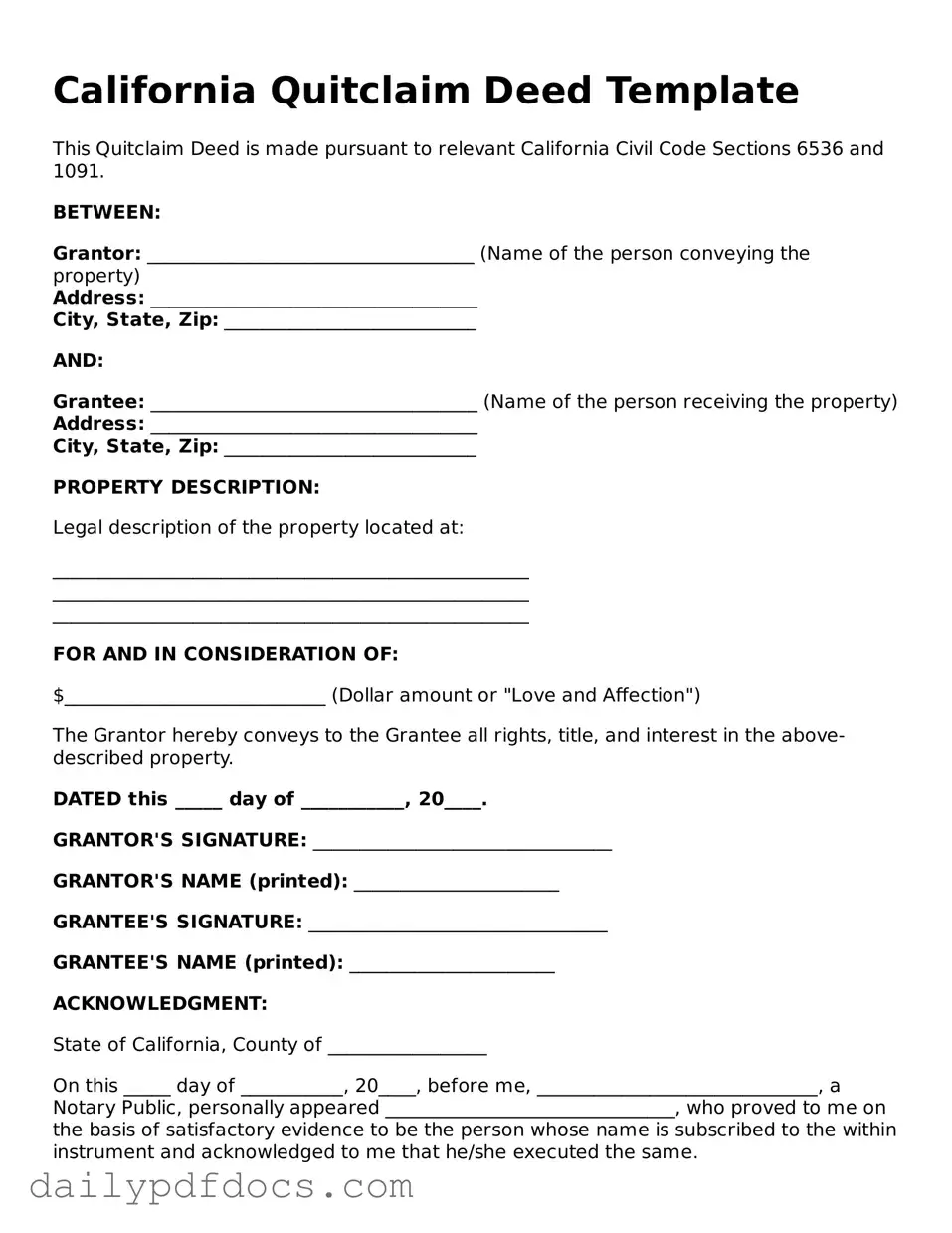California Quitclaim Deed Template
This Quitclaim Deed is made pursuant to relevant California Civil Code Sections 6536 and 1091.
BETWEEN:
Grantor: ___________________________________ (Name of the person conveying the property)
Address: ___________________________________
City, State, Zip: ___________________________
AND:
Grantee: ___________________________________ (Name of the person receiving the property)
Address: ___________________________________
City, State, Zip: ___________________________
PROPERTY DESCRIPTION:
Legal description of the property located at:
___________________________________________________
___________________________________________________
___________________________________________________
FOR AND IN CONSIDERATION OF:
$____________________________ (Dollar amount or "Love and Affection")
The Grantor hereby conveys to the Grantee all rights, title, and interest in the above-described property.
DATED this _____ day of ___________, 20____.
GRANTOR'S SIGNATURE: ________________________________
GRANTOR'S NAME (printed): ______________________
GRANTEE'S SIGNATURE: ________________________________
GRANTEE'S NAME (printed): ______________________
ACKNOWLEDGMENT:
State of California, County of _________________
On this _____ day of ___________, 20____, before me, ______________________________, a Notary Public, personally appeared _______________________________, who proved to me on the basis of satisfactory evidence to be the person whose name is subscribed to the within instrument and acknowledged to me that he/she executed the same.
WITNESS my hand and official seal.
Signature of Notary: ________________________________
Notary Public, State of California
